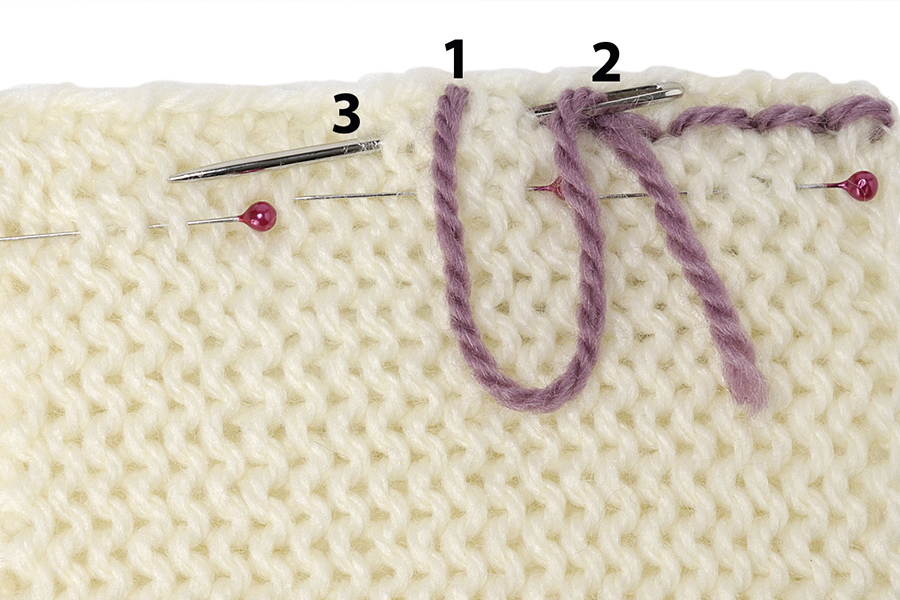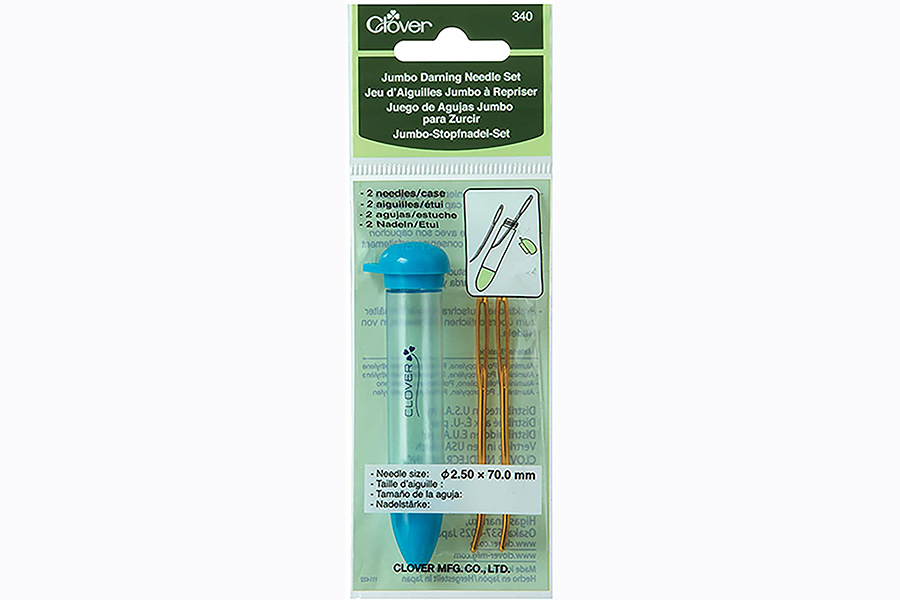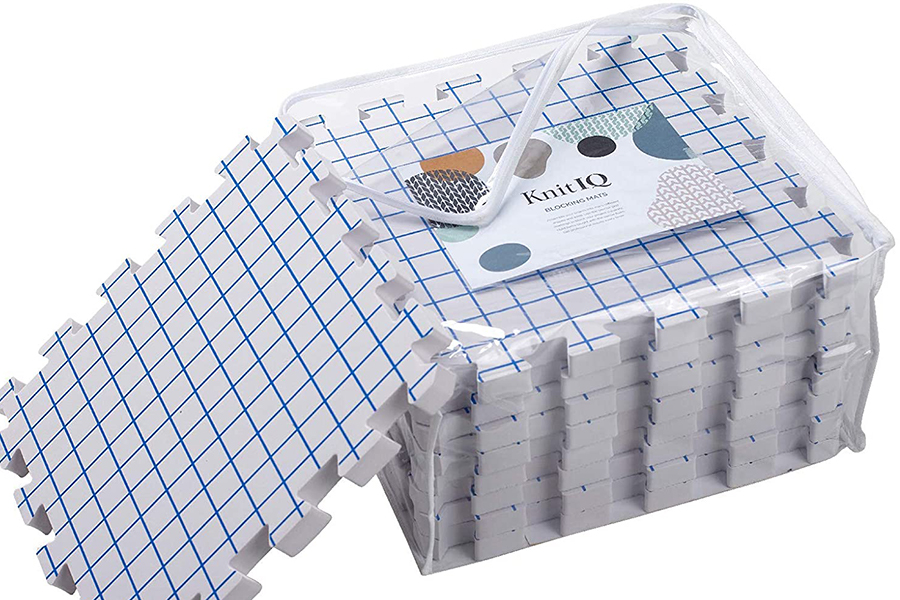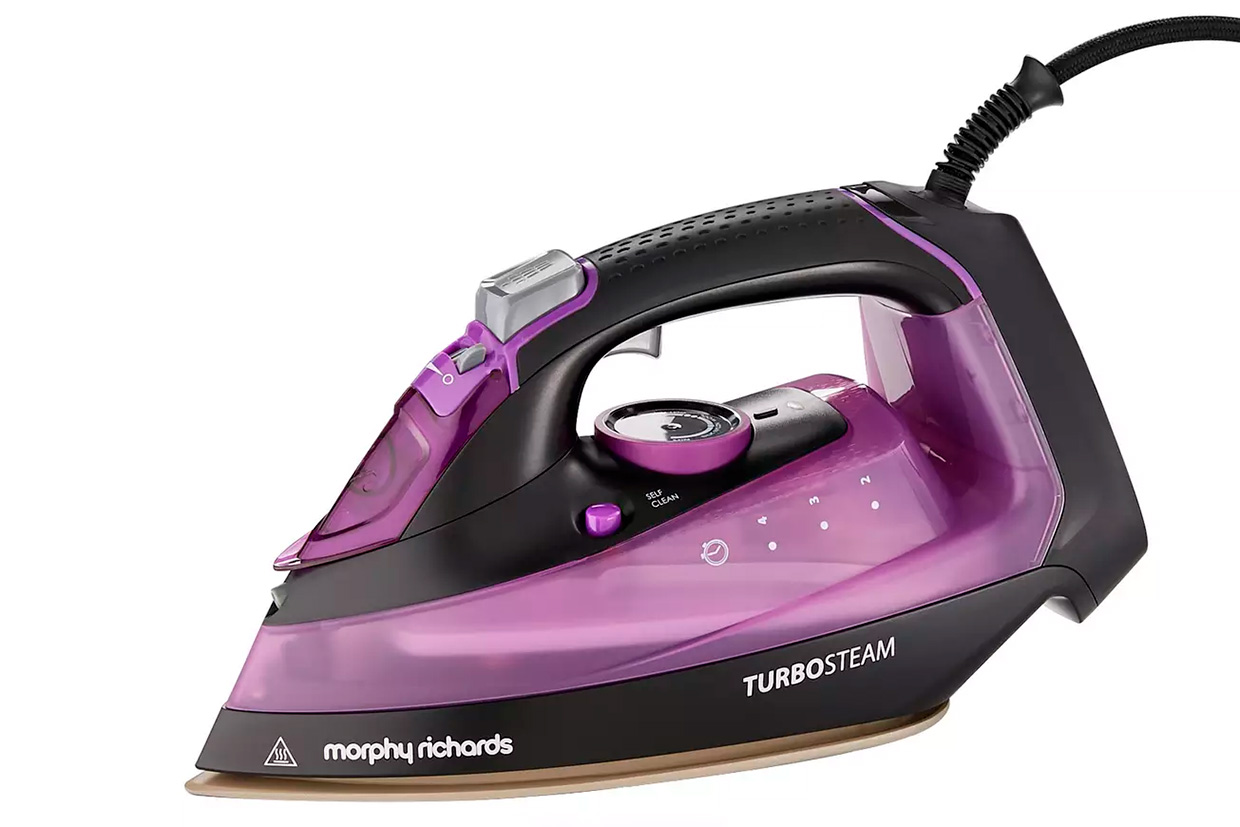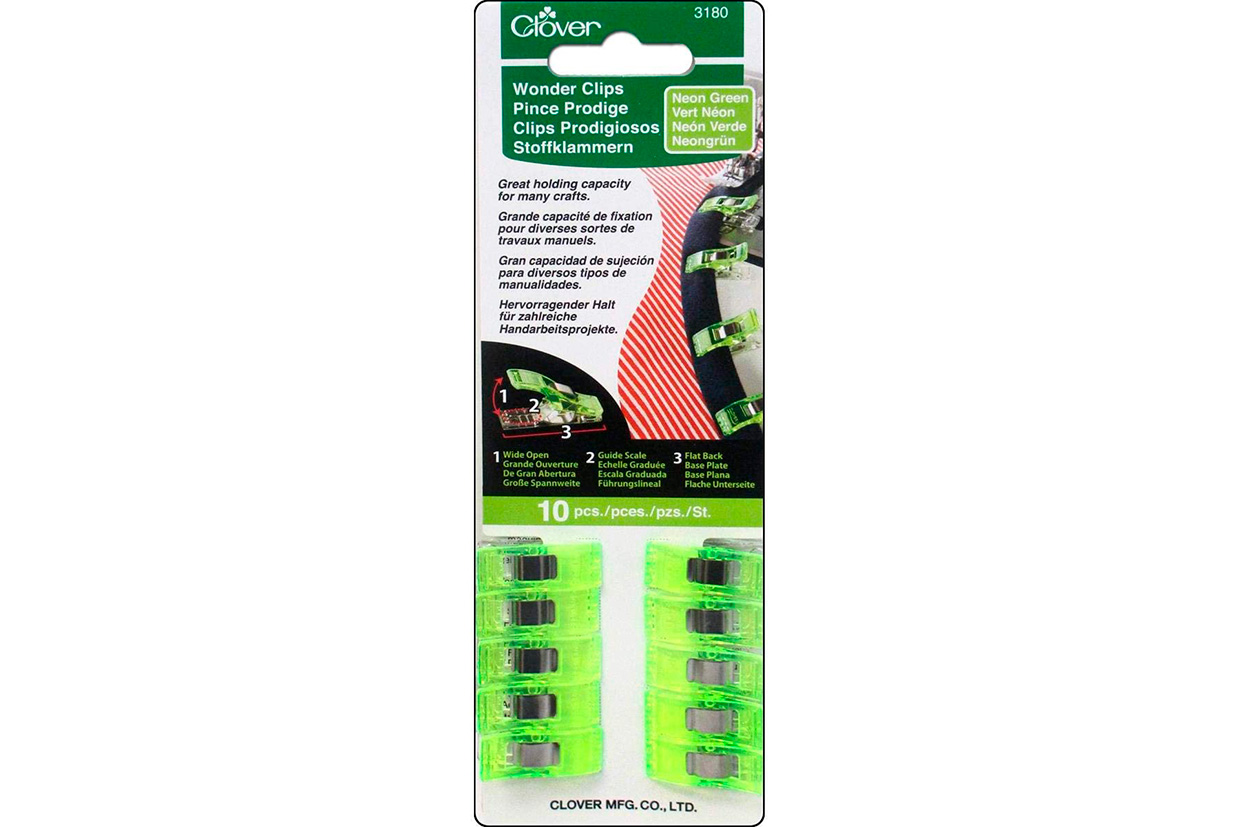To get the best results from your knitting, you need to know how to finish knitting professionally. Casting the final stitches off the needle may feel like the end, but if you want the perfect finish you're not quite there yet!
Finishing is a step that some knitters dread, as it can be time-consuming and fiddly, but we promise it's worth the extra effort to get a result to be proud of.
Are you ready to learn how to finish knitting like a pro? Then let's begin!
How to finish knitting
This guide will help you learn how to finish a knitting project in just a few easy steps.
Not all projects will require all five steps listed below (you might not need to sew up any seams, and may want to skip blocking if you're using a novelty yarn, for example). But if you follow this simple checklist you'll be able to make your projects look their best, fit better and stay in good shape for longer.
In this tutorial we'll show you how to finish knitting in five steps:
How to finish knitting step 1: casting off
The first step to finishing knitting is getting the stitches off your needles. To do this you need to cast off (also known as binding off).
There are many different cast off techniques that you can use, and all of them have different strengths that make them particularly suited to certain types of projects.
For example, if you're knitting a hat or socks, or anything else that requires a stretchy edge, then you need a more elastic cast-off method. Try the sewn cast off or suspended cast off.
Or your project might look better with a stiffer, more sturdy edge; the standard cast off would be perfect for this.
There are also decorative cast offs you can try, such as the picot cast off.
For step-by-step guides to all of these cast off methods, see our guide on how to cast off knitting.
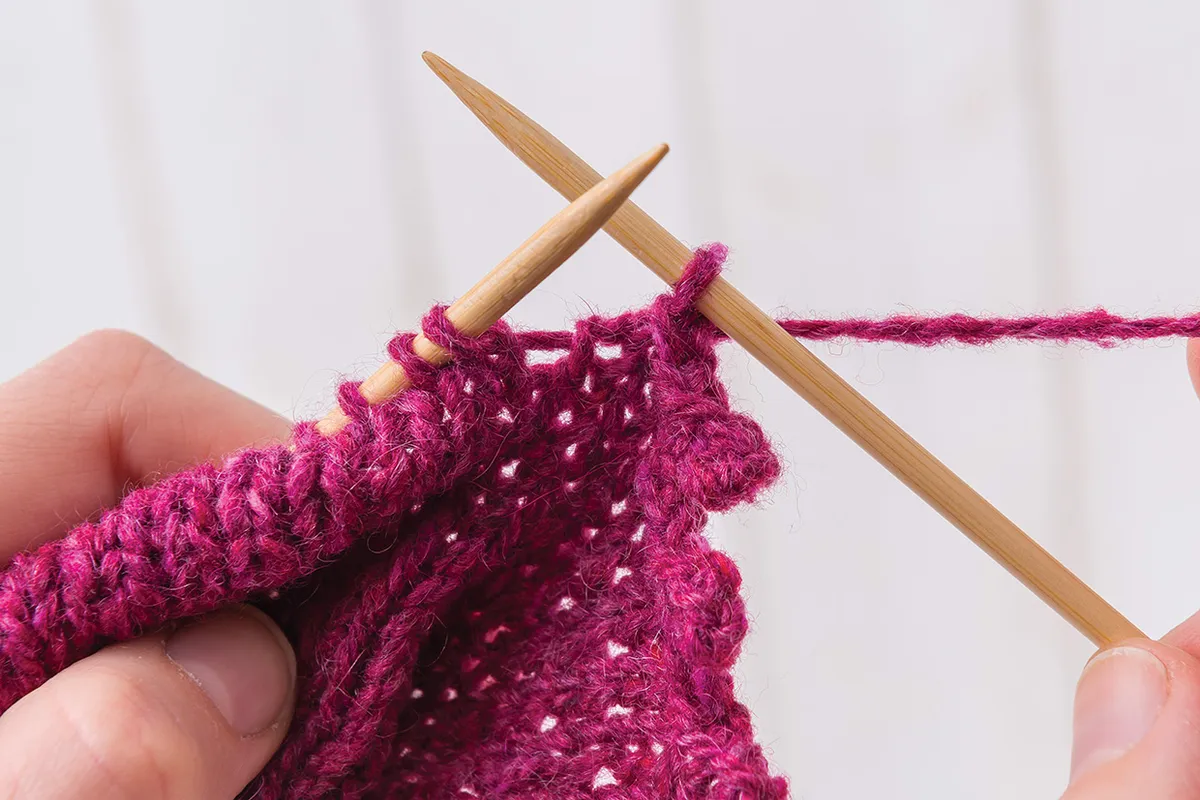
How to finish knitting step 2: weave in ends
When you cast off a project you'll find that you have straggly strands of yarn at the cast on and cast off corners, as well as at any points where you've started a new ball of yarn or changed colour. You could leave these as they are, but they'll look very messy – and there's also a risk that they'll come undone.
So, as you learn how to finish knitting an important step is getting rid of all these untidy yarn ends. You can do this by weaving them in, and there are a few different techniques you can use. There's no right or wrong way, but you may find that some methods come more naturally to you, or work better with different projects.
One of the easiest techniques is simply to use a tapestry needle to weave the yarn in and out of the stitches on the back of the work for a few inches, then cut off any excess. Alternatively, you could try duplicate stitch (Swiss darning) if you'd like your woven-in ends to be almost invisible.
Note that some knitters prefer to weave in ends after blocking, to avoid any potential bumps or puckering and give a smoother finish if the fabric stretches significantly. This may be important if you're knitting lace, but it's up to you which order you prefer.
Find out more about how to weave in ends in knitting with our in-depth tutorial, which covers six different techniques you can try, plus top tips for a neat finish.

How to finish knitting step 3: blocking
Before you sew up your finished item, you’ll get the best results if you take the time to block and press each piece of fabric. It might feel time-consuming when you’re in a hurry to be done, but it makes a big difference.
Some projects, especially those featuring lace knitting and cable knitting, can look crumpled when they come off the needles. The process of blocking will transform these pieces and make sure the stitches are even and flat.
However, there are exceptions. It’s important not to block or press any ribbing, because this could stretch it out of proportion and you won’t get the desired effect.
Get on board
To make your finished fabric look perfect, you need a blocking board! Check out our guide to the best blocking boards for knitting and crochet.

You'll need to choose the right blocking technique to use depending on your yarn and pattern. Two of the most common ones are damp and wet blocking.
For damp blocking, pin out your pieces (following the measurements on the schematic in your pattern, if there is one), cover with a damp cloth and leave to dry. With garments, follow the shape of the item and make sure it’s lying evenly.
To wet block your knitting, soak for 30 minutes or so in lukewarm water with a mild detergent. Squeeze out (don’t wring) and lay out flat on a soft, smooth surface (try a blocking board or folded blanket, covered with towels). Pin it out using long, rust-proof pins or blocking wires, to match the measurements given on the pattern. Keep the edges straight – and don’t pin any rib sections.
For full guides to these techniques and more, see our tutorial on how to block knitting projects.
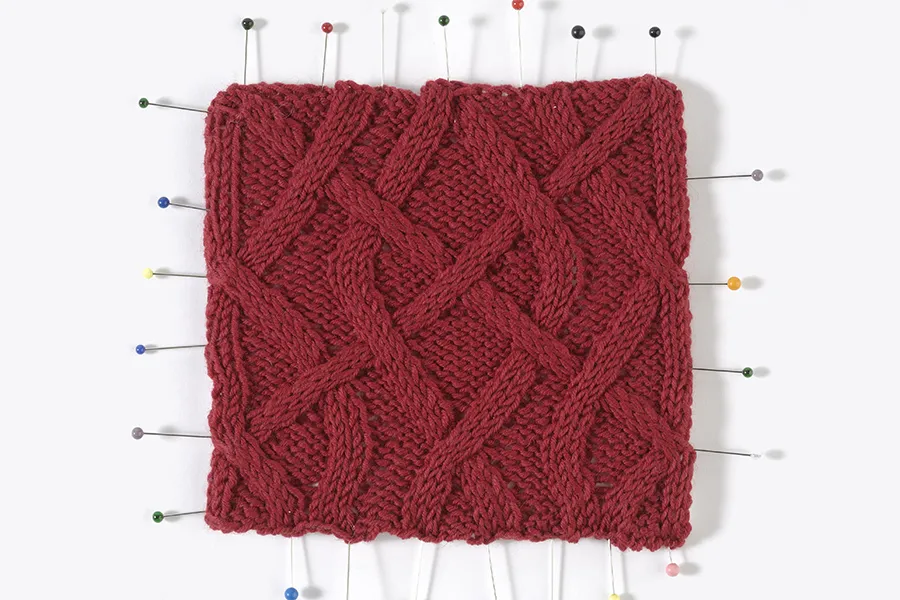
How to press knitting
Once your knitting is blocked, you may need to press it, using either the wet or steam-press method. Check the label on the ball band to see which method it needs (if any), and what temperature. Some items, such as garments or lace shawls, will need to be blocked and pressed after every wash to keep their shape.
To wet press, place a damp cloth over the pinned-out knitting, avoiding the rib, and leave it to dry. Remove the cloth once dry. When the knitting is dry, remove the pins and sew up.
To steam press, place a dry cloth over the knitting to protect it. Set the iron to the temperature on the yarn’s ball band. Hold the iron close to the knitting, but don’t touch it. Steam, but avoid the ribbing. Remove the cloth and leave it to dry. Remove the pins and sew up.
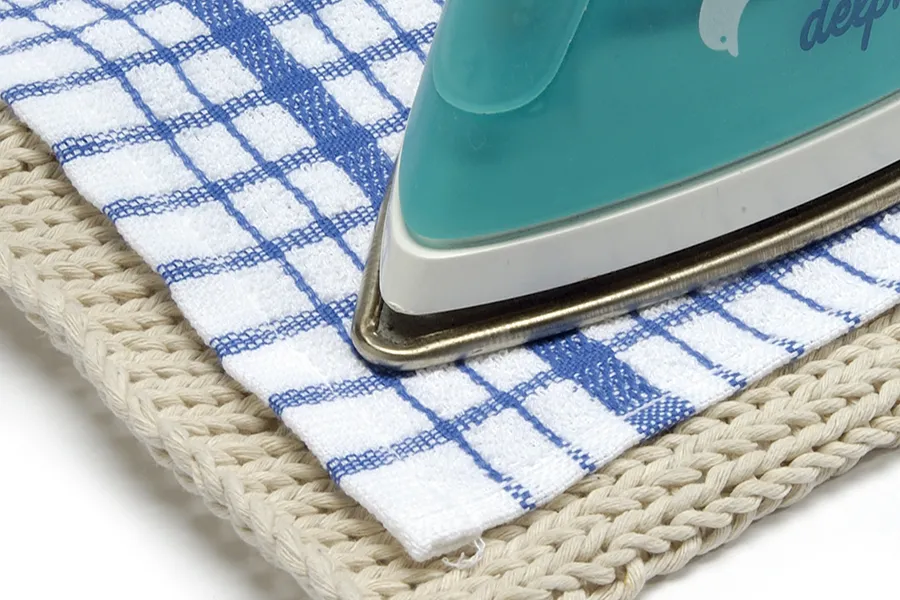
How to finish knitting step 4: seaming
After blocking and pressing, you’ll be ready for the most exciting part – sewing up! This will turn a few oddly shaped pieces into a garment you can wear.
There are many different ways to sew up or seam your knits, so you may want to try a couple and decide which you prefer for your project.
Whichever method you use, you’ll need a large-eyed, blunt needle and matching yarn, approx 50cm (20in) long. (We’ve used different coloured yarn for our tutorial below so you can see it.) You can use longer lengths but they're more likely to get tangled and twist. Shorter lengths are easier to manage and less likely to have any weak areas.
The yarn you choose for seaming is important. Generally, the yarn you knitted the item with will be fine, but if your project uses a single ply yarn or a novelty or very bulky yarn, it's best to avoid seaming with these. In these cases a smooth 4ply or DK yarn will be a better, stronger choice.
Try to stitch between the strands of yarn rather than through them – this avoids damaging the yarn and makes it easier to unpick your seam if necessary. Using a blunt needle makes it less likely that you'll split the knitted stitches as you sew.
At the start and end of the seam, secure the yarn with a few extra stitches, rather than a knot that might rub on the finished fabric and result in areas of wear.
Backstitch
One of the most used methods for seaming is backstitch. It's popular for its ease, speed and stability, and the fact that it gives your seam a bit of stretch. It's often recommended for shoulder seams, where you need a sturdy stitch that will take the garment's weight.
Here's how it's done:
